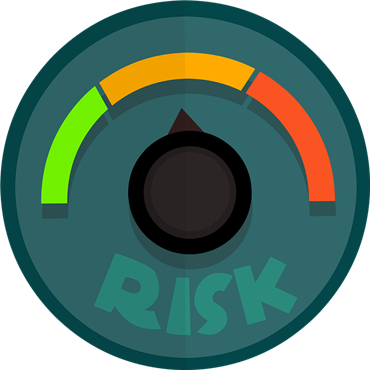Plan and prepare for the unplanned. In addition to the importance of reducing GHG emissions in getting to Net Zero; emergency planning should also be top of mind. A scout mentality allows for agility and more efficient recovery from disaster.
Our team has seen firsthand the impacts on small and medium businesses from the fires and floods in 2021. Below are our top suggestions for protecting and preserving your business's resources.
Mitigating Data Loss
Redundant data backups are a must. Use O365's OneDrive to backup your Sage 50 Database Daily.
About Risk Management
Risk management is the process of identifying exposures, hazards, and perils that can compromise an organization's mission and goals. The process continues by putting controls and initiatives into place to prevent and mitigate calamity.
You can't control everything in business. However, you have more control than you might think on reducing the financial impact. There are three areas for you to focus on when it comes to analyzing your risk exposures. These are frequency, severity, and probability.
Frequency
Frequency is the analysis of how often something bad can happen to you. For example, if you own a restaurant, you're assured that over the course of a 12 month period, you'll have a frequency of slips and falls. This is normal for any operation with heavy foot traffic. Factors in that cost include the time taken by staff to deal with it, medical expenses, and stoppage of operations, and financial impact for that day.
Every business has frequency issues. If you have a large fleet of vehicles, backing accidents are common. If you own a technology company, you may have frequent disruptions that delay or stop work. And if you run an office, power loss can cause issues with operations and loss of revenue.
Severity
Severity deals with catastrophic losses. Perils are large in scope, cost, and impact. Fire is the most common because it threatens nearly any business. Depending on your geographic location, perils like hurricanes, tornadoes, flooding, and earthquake are high on the severity scale. Finally, don't overlook those severity issues that don't involve physical damage. Loss of reputation, a ransom attack, weakening of brand, and loss of market share all fall under this category.
Probability:
Probability is the likelihood that something will happen. Probability is determined by your history, experience, industry, and best guess for the future. Consider technology, 10 years ago, the likelihood of the data in your computer system being kidnapped and held for ransom might be thought ludicrous.
Today, it's highly likely for any business.
The best thing you can do is invest effort, after the identification of exposures, to do an analysis of frequency, severity, and probability.
This will lead you to make better decisions when it comes to controlling and financing your risk.
Tactics for dealing with Risk
While much of life is out of your control, it doesn't have to be out of control. By utilizing these strategies you can dramatically reduce the frequency, severity, and financial impact of a loss to your business.
You can try avoiding risk by eliminating a product or service but then you might not have a business. Instead focus on:
- Prevention: If you have a business that has a frequency concerns of slips and falls for both customers and employees, your control measures might include better flooring to improve footing, handrails to improve balance, and better lighting to improve vision. Say you have an auto fleet that has an issue with backing accidents. You can install backup cameras and schedule driving training.
- Acquire Password Management Software
- Reduction Techniques :A severe loss would be a devastating fire. Reduction techniques include a sprinkler system, training employees on using fire extinguishers, creating and posting an evacuation plan for rapid exit, and installing a monitored fire alarm to increase response time from the fire department.
- Leverage the Sage 50cloud to backup your company data!
- Separation: Isolate valuable or volatile property from the rest of the building, spreading autos and trucks among different locations to avoid one catastrophe damaging all of them, and also implement redundancy with technology. Backup Backup Backup!
- Transferring the risk: Contract the services of 3rd parties to manage your servers and technology (more on Microsoft and Amazon below). If you're a building owner, review contracts with tenants. Ensure that you're listed as an additional insured on the tenant's insurance policy. Without transfer of risk, the global economy, from Fortune 500 companies down to the corner cafe, would not be able to operate.
Offensive attacks abound in business in the forms of property losses and lawsuits. Your defense is the last line of defense prepared to prevent and mitigate those attacks to keep you in the game. Make sure your defense is up to the challenge.
Implementation of your plan
Plans rarely fail at the planning stage. They most often fail at implementation. This may be the greatest waste of business investment. There are three critical elements to assuring both implementation and monitoring.
- Accountability: Someone must be granted authority. That shouldn't be the CEO. It should be someone in the executive ranks that has a demeanor and discipline to see that mileposts are met and carried through.
- This person must be allotted time to succeed as part of their main job. That might mean transferring other responsibility away from them. This work shouldn't be a do it in your spare time project.
- Quantifiable Results: Just like profitability can be measured, so can momentum. The project leader must report to someone above them with quantifiable data to show progress.
- Quantifiable metrics should be set at the start of the project. They might include measurements like time to completion, increased use of equipment, reduction in wasted time, better retention, and overall improvement in production. One can even throw in a few qualitative metrics like improved employee morale.
- Outside Expert: Good employees may become overwhelmed, they aren't experts in risk management, so the task becomes exhausting.
Having an expert to help in the knowledge formation, education, and accountability will be that final piece of the puzzle necessary to push the implementation over the finish line.
Monitor the progress and results.
Don't forget to include leadership development as part of organizational risk management. A company will go far in avoiding those pesky fires that derail profitability with good leaders in place. Most importantly, improve:
- Communication Skills
- The best leaders will use coaches and mentors on a regular basis to help them form strategies and tactics around influence skills. An organization would do well to help their leaders by investing in ongoing support. It's far cheaper than the consequences of not doing it.
- Empathy:
- Empathy is putting themselves in someone else's shoes and feeling the emotions, thoughts, and experience. Strong leaders are empathetic to the goals, desires, and challenges faced by those they manage and supervise. Empathy can't be faked. It must be genuine.
- Hiring and promoting practices:
- Leaders can be identified quickly by the first two characteristics discussed, communication skills and empathy. By making this constant search for strong leaders an organizational habit, the promotion from within won't be based on either desperation or time served.
Resources:
For more resources visit: www.Sage.com/Resources






